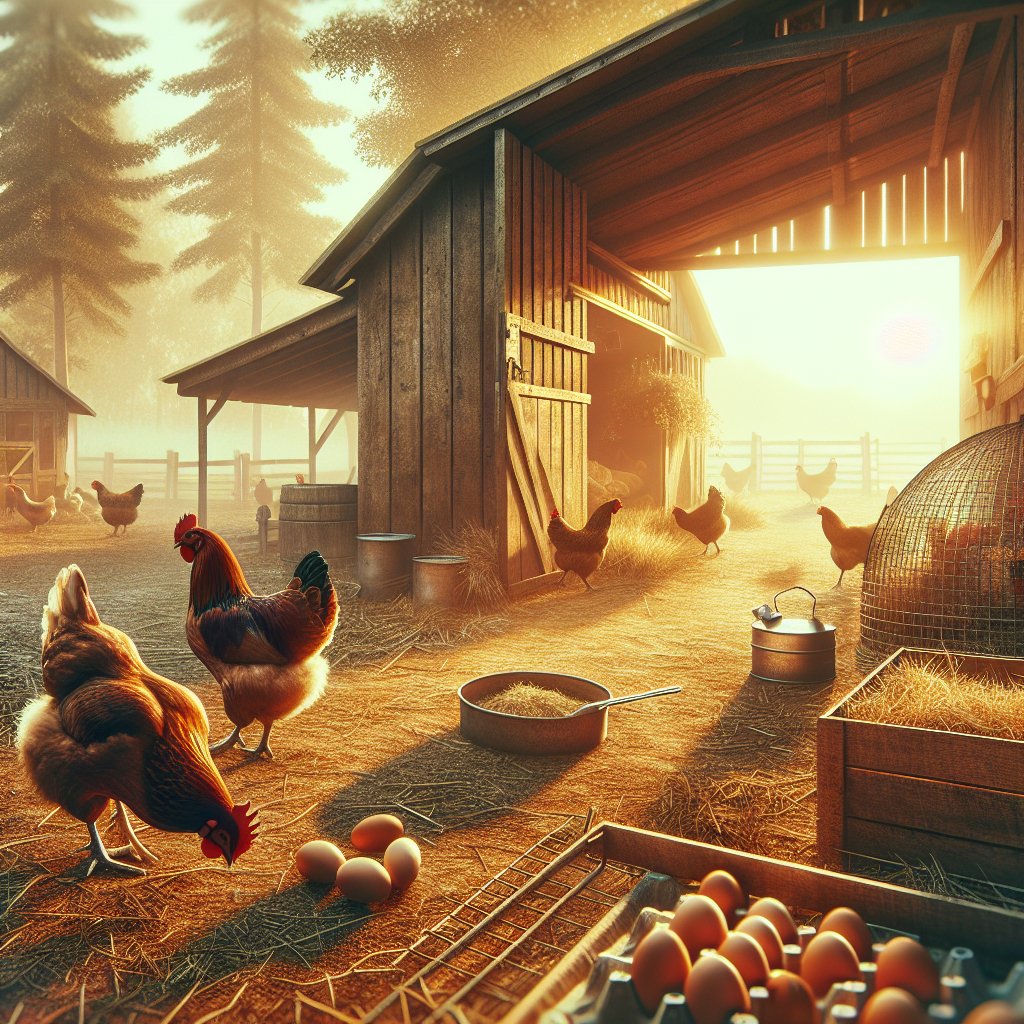
Raising free-range chickens for eggs and meat is an increasingly popular practice among both small-scale farmers and backyard enthusiasts. This method not only provides a sustainable source of food but also promotes animal welfare and environmental benefits. In this article, we will explore the essential aspects of raising free-range chickens, from selecting the right breeds to managing their health and nutrition.
Choosing the Right Breeds
When it comes to raising free-range chickens, selecting the appropriate breeds is crucial for achieving the desired outcomes in terms of egg production and meat quality. Different breeds have varying characteristics, and understanding these can help you make informed decisions.
Egg-Laying Breeds
For those primarily interested in egg production, certain breeds are renowned for their prolific laying abilities. Leghorns, for example, are known for their high egg yield and are a popular choice among egg producers. They are hardy birds that adapt well to free-range conditions, making them ideal for this purpose.
Another excellent choice is the Rhode Island Red, a dual-purpose breed that excels in both egg production and meat quality. These birds are known for their resilience and ability to thrive in various environments, making them a versatile option for free-range systems.
Meat-Producing Breeds
If your primary goal is to raise chickens for meat, consider breeds that are specifically developed for this purpose. Cornish Cross chickens are the industry standard for meat production due to their rapid growth and excellent feed conversion ratio. However, they may require more management in a free-range setting due to their size and growth rate.
For a more traditional approach, the Freedom Ranger is a popular choice among free-range meat producers. These birds grow at a slower pace compared to Cornish Cross, resulting in a more flavorful meat. They are also well-suited to free-range environments, where they can forage and exhibit natural behaviors.
Setting Up the Free-Range Environment
Creating a suitable environment for your free-range chickens is essential for their health and productivity. This involves providing adequate space, shelter, and access to natural resources.
Space Requirements
Free-range chickens require ample space to roam and forage. A general guideline is to provide at least 2 to 3 square feet per bird inside the coop and 8 to 10 square feet per bird in the outdoor run. This allows them to engage in natural behaviors such as scratching, dust bathing, and foraging for insects and plants.
It’s important to ensure that the outdoor area is secure and protected from predators. Fencing should be sturdy and buried at least a foot underground to prevent digging predators from gaining access. Additionally, providing overhead protection, such as netting, can deter aerial predators like hawks.
Shelter and Coop Design
A well-designed coop is essential for the safety and comfort of your free-range chickens. The coop should be weatherproof, well-ventilated, and easy to clean. Nesting boxes should be provided for egg-laying hens, with one box for every 4 to 5 hens. Roosting bars should be installed at varying heights to accommodate the birds’ natural roosting behavior.
Ensure that the coop is equipped with adequate lighting, especially during the shorter days of winter, to maintain egg production. Artificial lighting can be used to extend daylight hours, encouraging hens to lay eggs consistently.
Nutrition and Feeding
Proper nutrition is vital for the health and productivity of free-range chickens. While they will obtain some nutrients from foraging, a balanced diet is necessary to meet their dietary needs.
Commercial Feeds
Commercial poultry feeds are formulated to provide the essential nutrients required for different stages of a chicken’s life. Starter feeds are designed for chicks, grower feeds for young birds, and layer feeds for egg-laying hens. These feeds contain the right balance of protein, vitamins, and minerals to support growth and production.
For meat-producing breeds, broiler feeds are available, which are higher in protein to promote rapid growth. It’s important to follow feeding guidelines and adjust the diet as needed based on the birds’ age and purpose.
Supplementary Feeding
In addition to commercial feeds, free-range chickens can benefit from supplementary feeding. Kitchen scraps, grains, and garden waste can be offered to provide variety and additional nutrients. However, it’s important to avoid feeding chickens foods that are toxic to them, such as chocolate, avocado, and raw beans.
Grit and oyster shell should also be provided. Grit aids in digestion by helping chickens grind their food, while oyster shell provides calcium, which is essential for strong eggshells in laying hens.
Health and Disease Management
Maintaining the health of your free-range chickens is crucial for their well-being and productivity. Regular health checks and preventive measures can help minimize the risk of disease outbreaks.
Common Health Issues
Free-range chickens are susceptible to various health issues, including parasites, respiratory infections, and nutritional deficiencies. Regularly inspect your birds for signs of illness, such as lethargy, changes in appetite, or abnormal droppings.
Parasites, such as mites and lice, can be a common problem in free-range systems. Regularly clean and disinfect the coop, and consider using natural remedies or commercial treatments to control infestations.
Vaccination and Biosecurity
Vaccination is an effective way to protect your flock from common poultry diseases. Consult with a veterinarian to determine the appropriate vaccination schedule for your birds. Additionally, practice good biosecurity measures, such as limiting access to the coop and run, to prevent the introduction of diseases.
Quarantine new birds before introducing them to your existing flock to ensure they are healthy and free from disease. Regularly clean and disinfect equipment and maintain a clean environment to reduce the risk of disease transmission.
Conclusion
Raising free-range chickens for eggs and meat can be a rewarding endeavor that provides a sustainable source of food while promoting animal welfare and environmental benefits. By selecting the right breeds, creating a suitable environment, providing proper nutrition, and managing health effectively, you can ensure the success of your free-range poultry operation. Whether you are a small-scale farmer or a backyard enthusiast, the principles outlined in this article will help you achieve your goals and enjoy the many benefits of free-range chicken farming.

